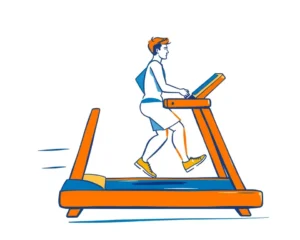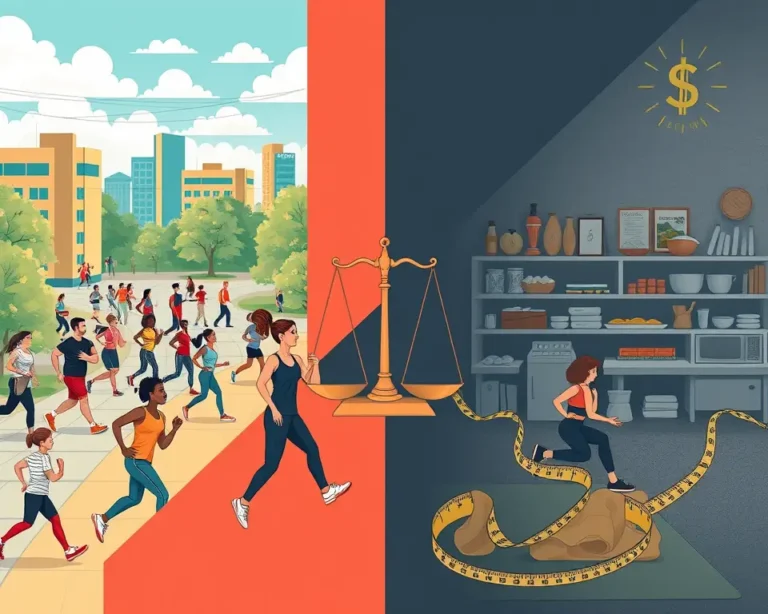The pursuit of health and fitness is often presented as a universally accessible goal, achievable through simple lifestyle changes. However, a closer look reveals a more complex reality, one where socioeconomic status significantly influences access to, and participation in, health-promoting activities. What appears to be a matter of personal choice is often shaped by systemic inequalities, highlighting how classism subtly permeates the health and fitness landscape.
The Uneven Playing Field of Health
Socioeconomic status (SES), encompassing income, education, and occupation, has a profound impact on health outcomes. People with lower SES often experience poorer health, shorter lifespans, and a higher risk of chronic diseases. This isn’t simply a matter of individual choices; it reflects the cumulative effect of limited resources and opportunities.
Barriers to Healthy Behaviors
Several factors contribute to the link between lower SES and poorer health:
- Financial constraints: Healthy food is often more expensive than processed alternatives. Low-income groups may rely on cheaper, convenient foods that are often low in nutrients.
- Limited access: Low-SES communities often have fewer grocery stores offering fresh produce and may lack safe, accessible spaces for physical activity such as parks and recreational facilities.
- Increased stress: The stress associated with poverty, including food insecurity, low-wage work, and inadequate housing, can negatively impact both mental and physical health.
- Healthcare access: Individuals living in poverty may delay seeking medical care due to financial constraints, leading to the exacerbation of health issues.
The Illusion of Choice
The common prescription of “just exercise more” often ignores the realities faced by individuals with limited resources. A gym membership, costing an average of $10 to $100 per month, can be an unaffordable luxury. Even seemingly free activities like walking or running can be hindered by unsafe neighborhoods or a lack of time due to multiple jobs or caregiving responsibilities.
The Fitness Industry: A Reflection of Class Privilege
The modern fitness industry has transformed health and exercise into an aspirational lifestyle, often marked by expensive equipment and exclusive workout apparel. This creates a sense of social identity tied to fitness, further marginalizing those who cannot afford to participate.
The Cost of “Wellness”
From pricey gym memberships to expensive athleisure wear, the fitness industry often caters to a specific socioeconomic group.
- Gym memberships: While basic memberships can be relatively affordable, premium plans with classes and personal training can cost upwards of $70 per month.
- Home exercise equipment: A single piece of equipment like a Peloton can cost thousands of dollars, making it inaccessible to many.
- Workout apparel: Brands like Lululemon and Athleta sell leggings and workout sets that can cost hundreds of dollars, creating a culture where expensive clothing is seen as a prerequisite for exercise.
The “Exclusive Club” of Fitness
The portrayal of fitness on social media often reinforces these class divisions. Flaunting expensive workout gear and exotic fitness retreats creates an image of health that is both aspirational and unattainable for many. As one individual noted, exercise is considered “almost like an exclusive kind of club.”
The Psychological Impact of Classism in Fitness
Beyond the material barriers, classism in health and fitness can have significant psychological consequences. The constant exposure to images of idealized, affluent bodies can lead to feelings of inadequacy, anxiety, and depression.
Mental Health Disparities
Discrimination and social exclusion based on socioeconomic status can cause feelings of inferiority and chronic stress, potentially leading to more serious mental disorders. These psychological problems can negatively affect self-esteem and self-image, making individuals feel unworthy because they don’t belong to a certain social class.
The “Moral Superiority” of the Fit
The emphasis on personal responsibility for health can also lead to the perception that those who are not fit are somehow morally deficient. This “guidance” often “masquerades as moral superiority to hide the stench of class privilege.” There is a subtle reiteration of the idea that if individuals simply behaved in some certain “perfect” ways their lives would be better.
Addressing the Imbalance
Combating classism in health and fitness requires a multi-faceted approach that addresses both the material and psychological barriers to wellbeing.
Policy Interventions
- Increase access to healthy food: Initiatives like subsidizing fruits and vegetables, and supporting local farmers’ markets in low-income communities, can help make nutritious food more affordable and accessible.
- Create safe and accessible spaces for physical activity: Investing in parks, green spaces, and recreational facilities in underserved communities can provide opportunities for exercise.
- Expand access to healthcare: Affordable healthcare options are essential for preventative care and managing health conditions.
Community-Based Programs
- Free or low-cost fitness programs: Community centers, schools, and non-profit organizations can offer affordable fitness classes and programs.
- Group fitness activities: Walking clubs, community sports teams, and other group activities can provide social support and motivation for exercise.
- Education and awareness: Promoting health literacy and challenging the stigma associated with poverty can help empower individuals to take control of their health.
Shifting the Narrative
- Promote body diversity and inclusivity: The fitness industry needs to move away from narrow beauty standards and celebrate diverse body types and abilities.
- Challenge the “moral superiority” of fitness: Emphasize that health is complex and influenced by a variety of factors, not just personal choices.
- Focus on holistic wellbeing: Encourage a broader definition of health that includes mental, emotional, and social wellbeing, not just physical fitness.
Conclusion: Health as a Right, Not a Privilege
Health and fitness should be a right, not a privilege reserved for the affluent. By acknowledging the role of classism in shaping health outcomes, we can work towards creating a more equitable and inclusive society where everyone has the opportunity to thrive. It requires dismantling systemic barriers, challenging societal attitudes, and promoting policies that prioritize the wellbeing of all, regardless of their socioeconomic status.







